From customer feedback to insights, 50% faster
Get a personalised demo of SmartSurvey. Customised to your goals, led by our experts.





The challenges of today’s CX teams

Manual analysis takes forever
Reading through thousands of comments to find what matters. Colour-coding spreadsheets. Trying to remember where the feedback actually is. Before you know it, it’s too late to act.

Issues hide in the noise
The same issue shows up dozens of different ways. But by the time you spot the pattern, it's already affected hundreds of customers.

Loops are never closed
Someone's supposed to follow up with that negative feedback. But who? By when? A week later, nobody's done it and the customer's already told the world about their experience.
Your problems solved. SmartSurvey helps you take action faster.
Identify emotion in open-text responses
Catch delight or frustration the moment a customer provides feedback, so you can fix problems before they spiral.
Learn more
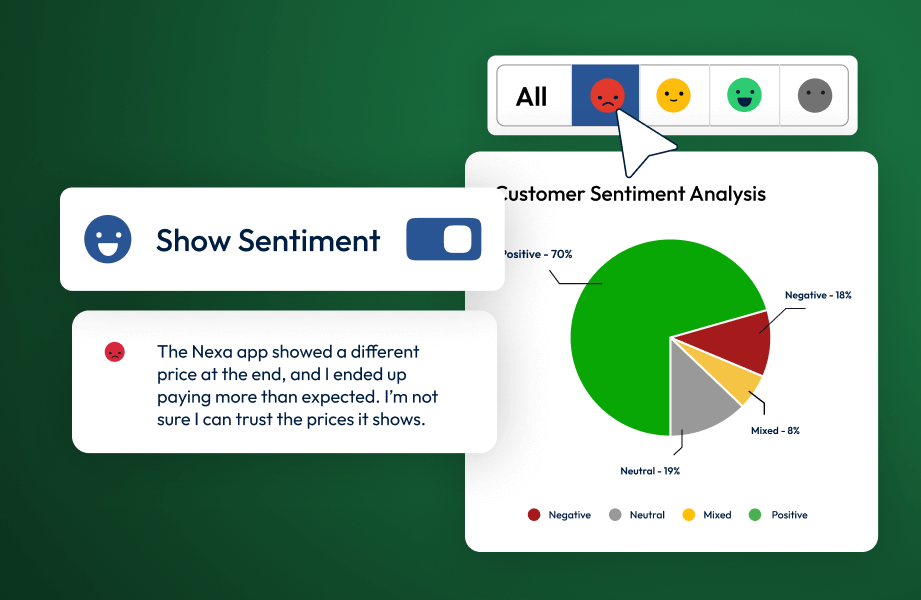
Spot the themes hidden the feedback
Thematic analysis uses AI to helps you identify patterns such as root-cause drivers hidden in your open-text feedback.
Learn more
Assign, track & resolve issues
Turn a complaint into a case, get it to the right person, and close the loop.
Learn more
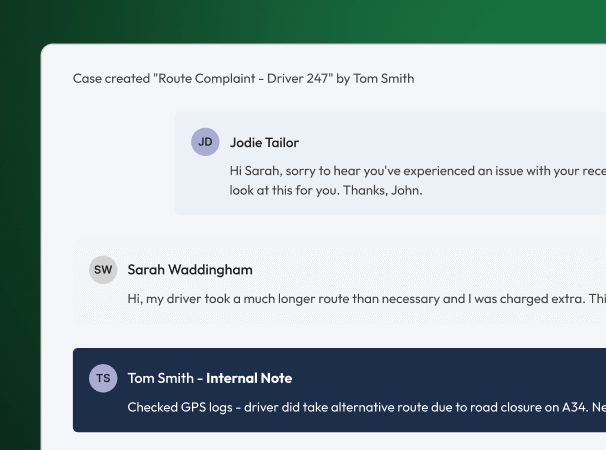
Share insights at scale
Give everyone from frontline staff to the C-suite a live view of CX survey data.
Learn more
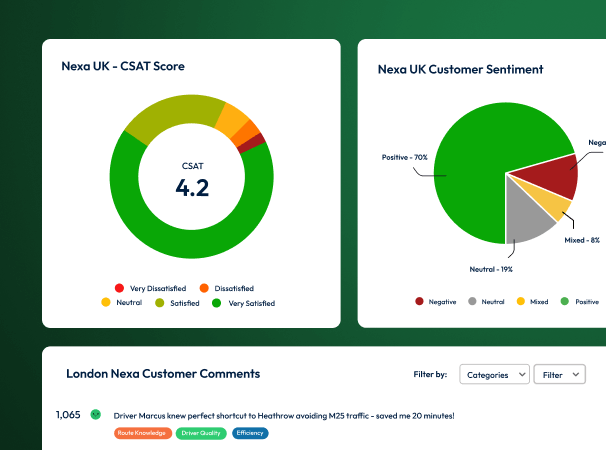
Reach customers anywhere
Meet your customers where they are. Inbox, phone, website, and much more.
Learn more
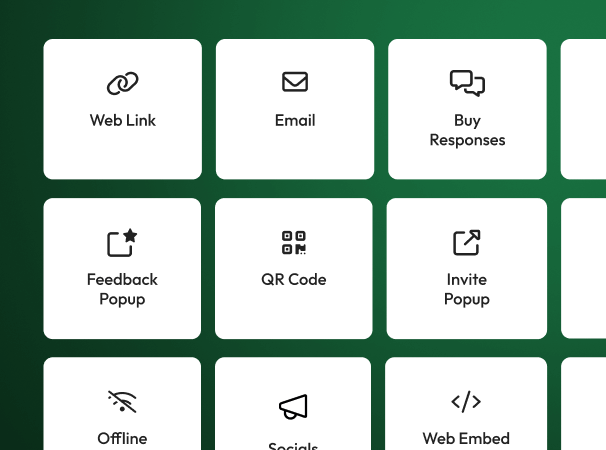
Discover how CX teams use SmartSurvey in our Product Tour below
An easy-to-use platform that enables CX teams to collect and act on feedback
AI Translations
Streamline the creation of multilingual surveys for global audiences by automatically translating your survey questions, answer options and supporting text into a selected language directly within the survey design interface. All of your responses are translated into the language of your choice.
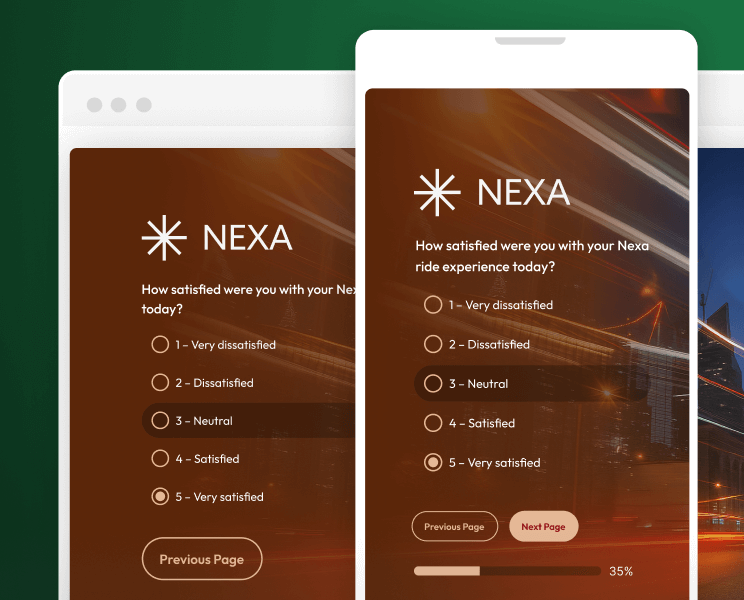
Brand every survey touchpoint
Create surveys that feel like part of your brand experience. Add smart logic so each survey adapts to the individual, giving you better data and higher completion rates.
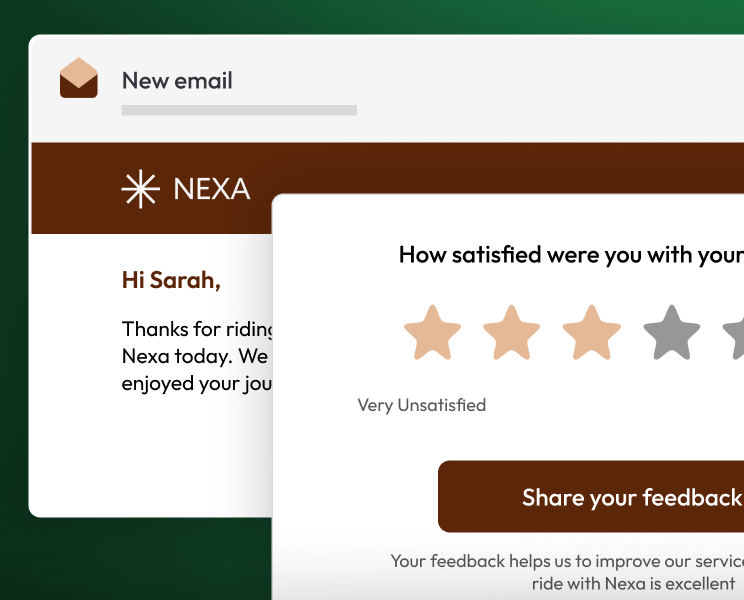
Embed questions in your emails
Embed CX questions straight into your emails. Customers answer directly in their inbox without the extra clicks or new pages. It's faster for them, which means better response rates for you.
Adaptive follow-up questions
Dynamically generate and ask follow-up questions based on an open-text response. Our AI analyses the input in real-time, determines if a follow-up would improve insight quality and generates anfollow-up question based on predefined user rules and AI logic boundaries.
Built-in CX questions that measure what matters
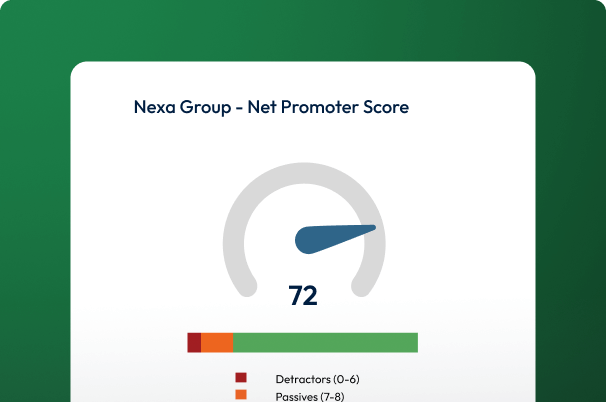
NPS
Discover what turns customers into loyal promoters. Pinpoint what to fix and what to amplify. Boost retention, grow revenue, and build a stronger brand with smart insights and action.
Learn more
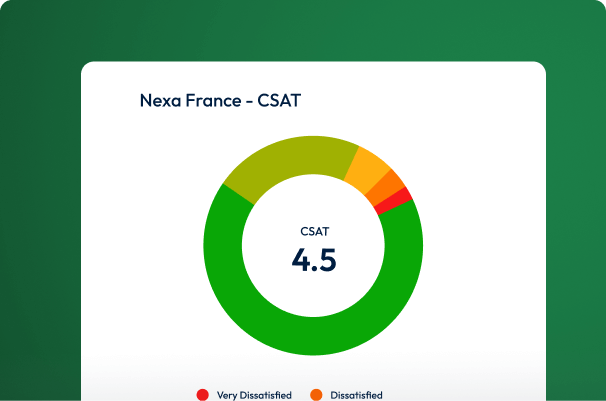
CSAT
Capture satisfaction after key touchpoints. Surface unhappy customers fast, remove friction, boost retention, and keep them coming back to do more business with you.
Learn more
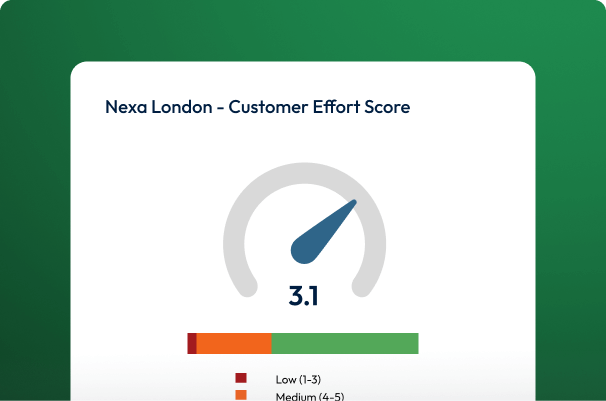
CES
CES pinpoints effort hotspots after chats, tasks or product interactions. Know where friction lives, so you can fix the issues, keep things running smoothly, and stop customers leaving.
Learn more
Connect survey data to your tech stack
Get more from your scores, boost efficiency and add value throughout your organisation.
Launch your CX project in four steps
Discovery call
Help our team understand your current challenges and goals – not a one-size-fits-all pitch.
Tailored demo
A tailored walkthrough focused on your goals, your teams, and your challenges.
Custom trial
We’ve shown you how SmartSurvey works - now take it for a test drive with your team.
Launch
We don’t disappear after the contract – our team guides your first survey launch step-by-step.
Trusted by CX teams like yours
“SmartSurvey combines user-friendliness with the security we need. It’s helped us make data-driven decisions to deliver better experiences.”
“Since we have been using SmartSurvey,
I would not look elsewhere for any other provider.”
Frequently asked questions
Yes, SmartSurvey makes it easy for customers to share their experiences by allowing them to respond in their preferred language, no matter where they are in the world.
Yes, SmartSurvey enables you to conduct comprehensive analysis of feedback from various regions. Our interactive dashboards enable stakeholders to easily share and review CX survey results in real-time, ensuring all relevant teams and departments gain access to insights that are relevant to their specific language, region, department or location.
Cross-tab reporting enables you to compare data sets side by side, allowing for a deeper understanding of customer experience data sets across different demographics, regions, or other segments.
SmartSurvey offers advanced filters and a range of chart types to drill down into data sets and visualise them in a way that is both insightful and easily digestible. This enables a more nuanced analysis, helping you to tailor your strategies effectively to meet the varied needs and preferences of your audience across different regions.
They are fundamentally different. Customer experience encompasses the whole journey a customer takes that includes every interaction your customer has with your brand.
Let's delve deeper...
Customer Service: This involves the support and advice provided to customers when they encounter issues or have questions about your product or service. Customer service is the human touch in the customer journey, representing the voice of your company to your customers. Its often during these interaction where you will run Customer Effort Surveys (CES) to uncover how hard or easy it was for a customer to get their problem resolved and identify opportunities for service improvement.
Customer Experience: CX covers the entire spectrum of the customer's interaction with the brand, including every point of contact between the customer and the company. It goes beyond direct interactions, incorporating elements like a retail store experience, as well as all the interaction with staff members across a multitude of departments, channels and services.
Customer experience includes everything in the customer's journey, integrating customer service as one of its components. Meanwhile, customer service focuses solely on the moments when a customer seeks help with a product or service.
On average we have most projects up and running very quickly and customers are sending out CX surveys inside a few days of having access to the platform. For larger projects, leveraging functionality such as multiple languages, multiple domains, the use custom variables, advanced logic or deep integration requirements this naturally adds an additional level of complexity. In most instances this adds no more than a few weeks to a launch times.
We currently offer integrations with 293 platforms, and we're continually adding more! However, we understand there are countless platforms out there.
If you require an integration that we do not currently support, our team is happy to explore developing a custom connector tailored to your specific needs.
To facilitate this process, please provide the URL of the platform you'd like us to integrate with, along with a description of your use case.
For example, you might request an integration with your CRM where a survey is triggered whenever a contact's lifecycle status updates to customer, or you might want an integration where NPS detractors automatically generate a ticket in your help desk, incorporating the survey response into the ticket.
Want to learn more? Book your CX demo today!
Chat with one of our friendly UK team about your project. We'll be happy to show you round the platform, explore its advanced functionality and show you how it can solve your CX challenges.